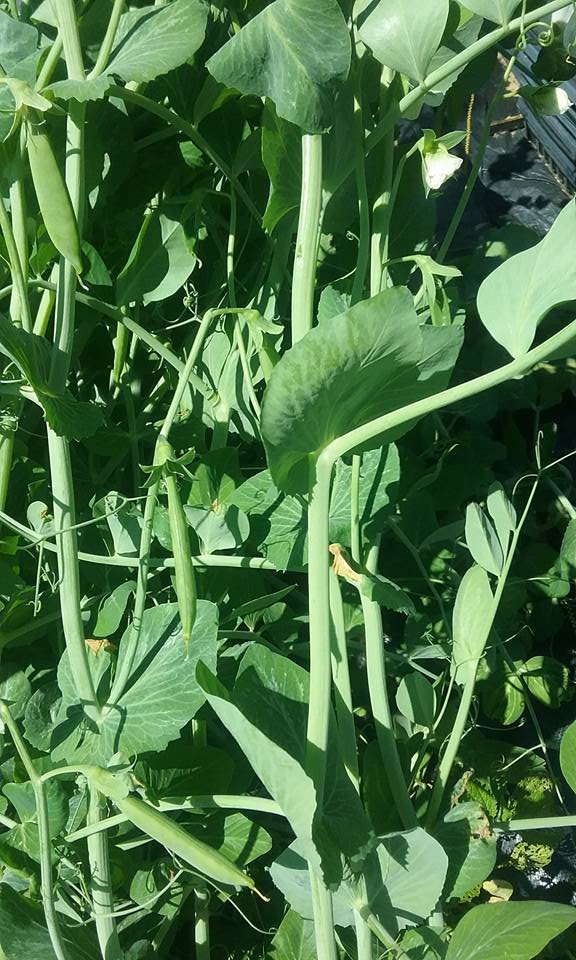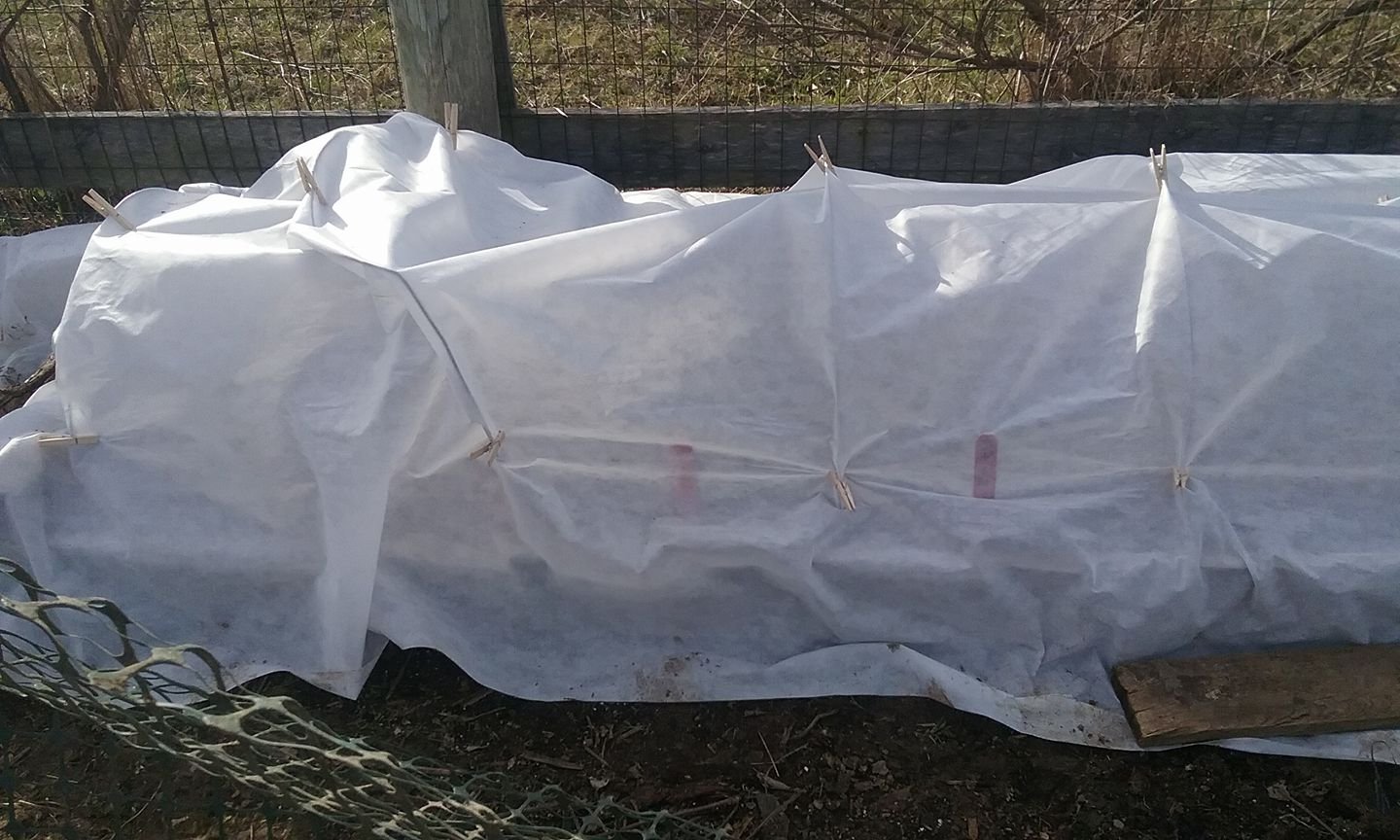Peas are a member of the legume family and are delicious vegetables with high protein content and many vitamins. I love them because they are one of the first vegetables you can harvest in the spring, which makes them a great way to usher in warm weather.
Peas are also relatively easy to grow so they are one of my top recommendations for beginning gardeners. Peas are a cool weather crop and in Zone 6B we can get a good harvest in spring and fall.
Varieties
There are three main categories of peas that home gardeners grow. I like all kinds but my favorite is sugar snap peas. I spent too much time shelling peas growing up to have much patience for that today! However, I will admit that I have fond memories of sitting with my grandmother, listening to her stories while shelling peas.
Shelling peas, also known as garden peas, are where you remove the peas from the shell and don’t eat the shell. In actuality, the shells are edible - they just have a lot of fiber and don’t taste as good.
Snow peas are long flat peas with small but tasty peas. You eat both the pod and the pea. Popular in stir-fries and Asian dishes.
Snap peas, often referred to as sugar peas are where you eat both the peas and the pod. Great for salads.
Snap Peas
Cascadia Snap Pea
One of my all-time favorites is the Cascadia snap pea - a vining variety that produces pea pods about 3 inches long. Cascadia peas are resistant to a few common diseases, so they are a safe choice for beginning gardeners.
This variety takes 65 days to reach maturity. It is an open-pollinated hybrid, which means it can be used for seed saving.
Blue Podded Pea
Blue Podded Pea is a Dutch variety, also called Blauwschokkers. Is worth planting for its beautiful deep blue-purple color. Despite the striking color of the pods, the peas themselves dry to a normal green color.
Blue podded peas are a bush pea, so they don’t need staking or trellising. You can eat them fresh, or let the peas develop and dry out to use in soups. This variety takes 80 days to reach maturity. It is an heirloom pea and can be used for seed saving.
Check Out My Latest Book
327 Pages
Section 1 covers soil fertility. Section 2 covers 34 vegetables with in-depth planting and growing information for each one.
Snow Peas
Green Beauty Snow Pea
Green Beauty Snow Peas are a fun choice because they are one of the biggest pea varieties I have ever seen. This vining variety produces pea pods up to 8 inches long! They are great in stir-fries but also tender enough to eat fresh.
This variety takes 60 days to reach maturity and is an heirloom, which means it can be used for seed saving. Another great choice for Zone 6B.
Shelling Peas
Little Marvel Garden Pea
Little Marvel Garden Pea produces a great shelling pea with a mild, sweet flavor. You can eat the peas fresh or use them in cooking. You can also let the peas dry in their pods if you want to use them for soups.
This is a bush variety, so you don’t need supports like staking or trellises for it. Little Marvel takes about 60 days to reach maturity and is an heirloom, so it can be used for seed saving.
Strike
Strike is a great variety for an early spring harvest. They reach maturity in only 55 days which makes them the fastest developing variety on my list. Strike peas have a sweet flavor and I enjoy them most for fresh eating.
The pods grow to about 3 inches long. This is an open-pollinated hybrid and can be used for seed saving.
Lincoln
This heirloom pea is what my grandmother used to grow. They became popular in the south during WWII and hold up to heat better than many varieties. Great yields and very tasty. 67 days till harvest. A great choice for USDA Zone 6B.
Planting
Peas are very cold-hardy and can be directly planted outside before the last frost. To get a jump start on the season.
For 6B in Kentucky, I direct seed outside in mid-March. I typically cover them with row cover till they are established. You need to monitor the temperature under the row cover since it can get too warm on a sunny day.
While peas are traditionally planted directly in the soil, I have successfully transplanted sugar peas. This extends the season by a couple of weeks and gets the plants off to a solid start. I typically plant in pots around March 1st in a warm room.
Space seeds 2-3 inches apart and in rows that are 24 inches apart for bush types. Vining types that will have a trellis will need a greater distance. You should check the seed pack for the particular variety that you plant to figure out the right spacing.
Peas like a pH of 6.5-6.8 so test your soil. You may want to add some ground limestone or wood stove ashes.
In Zone 6B, you can also plant a crop for the fall to get a harvest by early November. Starting peas in warm weather can be a bit tricky.
Pea seedlings do best in cool weather, so I usually use a shade cloth when I plant seeds in August to prevent them from getting too hot.
Read my article on fall gardening.
Caring
Soil Fertility
Peas are a legume that can fix nitrogen from the air into the soil. This doesn’t mean that you should place them in an area of poor soil. You still should mix in compost and manure so that your plants get plenty of nutrients. The soil should also be well-drained for best results.
I offer a FREE teachable course on Composting 101
Trellis
Most peas are vining varieties and grow best if you add support like a trellis. However, a few varieties are bush peas, and they are freestanding. Peas don’t require a lot of weeding once they are well established.
Water
Peas need plenty of water. Water regularly and deeply. You can also add mulch to help conserve water.
Problems
Peas have relatively few problems compared with other garden vegetables, but some issues include rodents, pea moths, and pea thrips.
Animal Pests
Moles, voles, field mice, and rabbits all enjoy eating both the seeds and the young plants.
Covering the plants in row covers helps to prevent pest damage.
Fencing - works well for rabbits but needs to be placed 6-9 inches down into the ground to deter moles/voles
Use a humane, sound deterrent. This one is solar-powered and emits noises underground.
Utilize your cat to patrol the garden but make sure they aren’t targeting songbirds instead
Disease
In my area, the three to watch out for are rust, powdery mildew, and fusarium root rot. Cascadia peas are resistant to rust and powdery mildew, so if these diseases are also common in your area, Cascadia is a good variety to try.
Rust
Rust is common on field peas in southern states and can spread to the home gardener. It’s caused by the fungus Uromyces appendiculatusIt and first appears as yellow and whitening leaves which then fall off.
The stems develop reddish-brown pustules and plants often fall over and die.
Prevention and Treatment of Rust
Crop rotation
Good plant hygiene - humans can spread it
Clean up and compost in a hot pile all debris
Neem oil and sulfur help prevent and treat
Root Rot
You will notice stunted growth and yellow leaves near the soil line. One way to prevent root rot is to make sure you plant peas in well-drained soil. Warm, wet soil encourages the virus.
Companion Planting
Planting garlic nearby helps keep away pest insects that might damage peas.
Peas help fix nitrogen in the soil, which makes them a valuable companion for many garden plants. Keep peas away from onions and chives as these plants can increase the risk of spreading powdery mildew to the pea plants.
Harvesting and Storing
The right time to harvest peas depends on what kind of pea you are growing: snow pea snap pea, or shelling pea.
Snow peas are best if you harvest them when their pods are flat before the peas have a chance to develop. This is why they are one of the earliest types of peas to pick.
Snap peas also have edible pods, but you can pick them when the peas have begun to round out.
Shelling peas should stay on the vine until the peas are round and ripe for fresh eating. They last for about a week in the refrigerator.
If you want to preserve shelling peas by drying them to cook with later, you should let them dry out on the plant.
Peas hold up well in both freezing and canning.
Subscribe to our YouTube channel @foxruneec
Seed Saving
Peas are one of the easiest vegetables for seed saving, so it is a great one for beginner gardeners to try. Peas and beans are self-pollinating and carry a low risk of cross-pollination affecting the next generation of pea plants.
Allow the peas to dry on the plant until brown, and then pick, shell them, and let them air dry for six weeks. Place them in an airtight container. Then, the seeds can last for up to three years if you store them in a dark, cool place.
Author, Ame Vanorio, is the founder of Fox Run EEC and has 29 years of experience gardening in Zone 6. Check out her Author Page on Amazon.










Swiss chard is a beautiful plant to grow and cook. Both the stems and the leaves are delicious. Swiss Chard is a fast-growing crop. Baby leaves can be harvested at 30 days and 60 days for bunching.